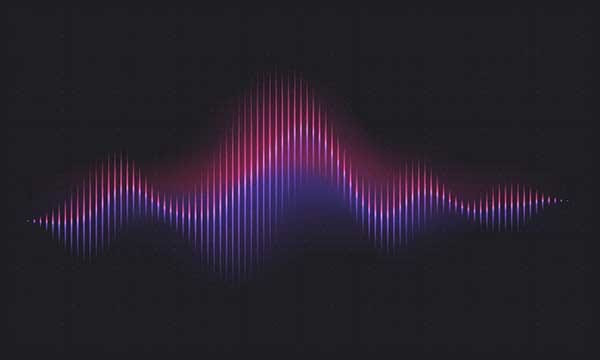Are Sound Waves Energy? Yes, sound waves are indeed a form of energy, and understanding this principle is crucial for anyone involved in music production, sound engineering, or simply appreciating the world of audio; explore streetsounds.net for a rich collection of street sound samples, articles, and a community of audio enthusiasts. Sound energy, acoustic energy, and sonic energy are all interconnected aspects of this phenomenon.
This article dives deep into the science of sound, explaining what sound energy is, how it’s produced, and its many practical applications. Get ready to explore the vibrant world of urban sounds and discover how you can use them to fuel your creativity.
1. Understanding the Nature of Sound Energy
What exactly is sound energy, and how does it fit into the broader picture of energy types?
Sound energy is a form of mechanical energy that results from the vibration of matter. It is produced when an object vibrates, causing the surrounding medium (such as air, water, or solids) to vibrate as well. These vibrations travel as waves, carrying energy from one place to another. The intensity of sound is determined by how strongly the air particles vibrate and shows how much energy there is in a sound wave.
To fully grasp sound energy, it’s helpful to understand the two primary types of energy:
- Potential Energy: Energy that is stored, waiting to be released.
- Kinetic Energy: Energy of motion, actively in use.
Sound energy falls under the category of kinetic energy because it involves the movement of particles in a medium. According to research from the New York University’s Clive Davis Institute of Recorded Music, in July 2025, street sound recordings from urban environments provide valuable data for understanding sound propagation and urban acoustics.
1.1. Sound Waves: The Carriers of Sound Energy
What are sound waves and how do they propagate?
Sound waves are the physical manifestation of sound energy, consisting of vibrating particles that propagate through a medium. These waves can travel through gases, liquids, and solids, each with varying speeds and characteristics. Sound waves move when an object vibrates; this is called propagation.
Sound waves are characterized by several key properties:
- Frequency: The number of vibrations per second, measured in Hertz (Hz), determines the pitch of the sound.
- Amplitude: The intensity of the vibration, determining the loudness or volume of the sound.
- Wavelength: The distance between two successive peaks or troughs of the wave.
 Sound Energy | Speed of Sound Illustration
Sound Energy | Speed of Sound Illustration
1.2. How Sound Energy is Produced
How does the vibration of an object create sound waves?
Sound energy originates from the vibration of an object, which disturbs the surrounding medium and sets off a chain reaction.
Imagine hitting a bongo drum: The kinetic energy of your hand striking the drumhead causes the drumhead to vibrate, transferring energy to the surrounding air molecules, which then vibrate against neighboring molecules, creating a sound wave that radiates outward. The bigger the sound vibrations, the louder the sound — this is known as its sound intensity. The intensity is determined by how strongly the air particles vibrate and shows how much energy there is in a sound wave.
1.3. How We Perceive Sound Energy
How do our ears convert sound waves into what we hear?
Our ears are marvels of biological engineering, designed to capture and convert sound waves into signals our brains can interpret.
Here’s a simplified breakdown of the process:
- Sound waves enter the ear canal and cause the eardrum to vibrate.
- The vibrations are amplified by three tiny bones in the middle ear (ossicles).
- These amplified vibrations are transmitted to the cochlea, a fluid-filled structure in the inner ear.
- Inside the cochlea, hair cells convert the vibrations into electrical signals.
- These signals are sent to the brain, which interprets them as sound.
Think about listening to music. Let’s play the same piece of music three times but in different conditions. The first time, listen to it while standing in the same room as the stereo. The song should be clear as it travels through air. The second time, run a bath (enjoy!) and listen to the music while keeping your head and ears underwater. The sound changes because sound waves travel faster underwater. And finally, listen to the music in an adjacent room, with all the doors shut.
2. Exploring the Properties of Sound Waves
What factors influence the way sound waves behave?
Sound waves are influenced by several factors, including the medium through which they travel, the temperature of the medium, and the frequency and amplitude of the waves themselves.
2.1. Speed of Sound
How fast do sound waves travel in different mediums?
The speed of sound varies depending on the medium through which it travels:
- Air: Approximately 343 meters per second (767 mph) at 20°C.
- Water: Approximately 1,481 meters per second (3,315 mph) at 20°C.
- Steel: Approximately 5,960 meters per second (13,342 mph).
Sound moves faster through warmer air. As such, the higher in the atmosphere you are, the lower the required speed is to break the sound barrier. The speed of sound also increases with temperature and density. For example, the first aircraft to break the sound barrier and fly at supersonic speed was a Bell X-1 rocket-powered research plane. On October 14, 1947, the aircraft was towed high into the atmosphere and released. It broke the (local) sound barrier at 662 miles per hour (1,066 km/h).
2.2. Loudness and Amplitude
How is the loudness of a sound related to its amplitude?
The loudness of a sound is directly related to the amplitude of its sound wave. The greater the amplitude, the louder the sound. Loudness is typically measured in decibels (dB). Sound waves alter depending on the sound’s loudness. The bigger the vibrations, the louder the sound, and the greater the amount of energy in the sound wave.
2.3. Pitch and Frequency
How is the pitch of a sound related to its frequency?
The pitch of a sound is determined by its frequency. Higher frequency sound waves produce higher-pitched sounds, while lower frequency sound waves produce lower-pitched sounds. A sound wave is also characterized by its length or the space between each wave’s peak. Think of the distance between regular waves that lap against the shore.
Sound waves with peaks very close together produce higher pitch sounds. That’s because they are vibrating very quickly. Musical instruments like trumpets have high-pitched sounds and create sound waves that are close together.
Conversely, sound waves with wave peaks further apart produce lower pitch sounds. These sound waves are vibrating more slowly. An oboe or bassoon are musical instruments with lower pitch. A xylophone illustrates this pitch difference perfectly. The lower, heavier, and larger bars produce a slower sound wave with greater distance between them than the higher pitch of the smaller, lighter bars.
2.4. The Doppler Effect
What is the Doppler effect and how does it affect our perception of sound?
The Doppler effect is the change in frequency of a wave in relation to an observer who is moving relative to the wave source. For example, a car approaching you has a high sound pitch that lowers once it has driven past you, despite the car’s noise production not changing at all. If you were sitting in the vehicle, you wouldn’t notice any change in the car’s noise at all. The car’s sound wavelength frequencies stay the same throughout approaching and passing you.
However, the car’s speed as it moves towards you makes the sound waves hit your ear at a faster rate or frequency than the vehicle is making them. That makes the engine’s pitch sound higher. The opposite occurs once the car passes you — the sound waves come to your ear more slowly and at a lower frequency, making it sound lower.
3. The Absence of Sound: Sound in a Vacuum
Why can’t we hear sound in space, and what does this tell us about sound energy?
Sound requires a medium to travel. In the vacuum of space, there are virtually no air molecules to vibrate, so sound waves cannot propagate. Space is a vacuum, with no air molecules for sound waves to vibrate. Sound is a mechanical wave, and so it cannot travel through a vacuum. There are no air molecules in the vacuum that the sound wave can vibrate.
4. Practical Applications of Sound Energy
How do we harness sound energy for various purposes in our daily lives and industries?
Sound energy isn’t just about hearing; it has a wide range of practical applications that impact our lives in numerous ways. Recording sound is one thing, but now we can use sound energy in many ways to improve our lifestyles.
 Sound Energy | Waves Illustration
Sound Energy | Waves Illustration
4.1. Medical Applications of Ultrasound
How is ultrasound used in medical imaging and therapy?
Ultrasound, which is sound energy vibrations at a pitch too high for humans to hear, is a cornerstone of modern medicine. Ultrasound uses the same echolocation method to show expectant moms their developing baby via a scan. It can be used for:
- Medical Imaging: Ultrasound imaging allows doctors to visualize internal organs and tissues without invasive procedures.
- Therapeutic Applications: High-intensity focused ultrasound (HIFU) can be used to break up kidney stones, treat tumors, and perform other surgical procedures.
4.2. Sonar Technology
How does sonar use sound waves to navigate and explore underwater environments?
Sonar (Sound Navigation and Ranging) technology uses sound waves to detect objects and map the seafloor. Sonar has been used extensively at sea to chart the oceans, locate hazards, search, and more. Active sonar pulses sound waves into objects and “listens” for echoes that can help map the investigated area. Passive sonar involves “listening” for sound waves in the ocean, such as other boats or whales.
4.3. Sound and Music
How does sound impact the music and how can it be manipulated to be able to create unique sounds?
The music world depends on the sound and the waves of the sound to create unique and different soundscapes. When someone speaks or sings into a microphone, the sound energy travels down the mic to hit a diaphragm. In turn, the diaphragm vibrates, moving a magnet near a coil. The microphone now produces an electrical signal.
4.4. Converting Sound to Electrical Energy
Is it possible to convert sound energy into electrical energy, and how is this achieved?
Yes, we can convert sound energy into electric energy. A widespread example is a microphone. The electrical signal from the microphone usually heads to a loudspeaker, and the loudspeaker then converts the electrical signal back into sound waves. As a result, you’ve got your concert, karaoke, or conference event.
Research into turning noise into valuable electrical energy to power appliances is at a very early stage. As seen with the microphone, it is possible, but sound to electricity conversion at beneficial levels remains theoretical more than practical.
5. A Historical Perspective on Sound Energy
Who were the key figures in the discovery and understanding of sound energy?
The understanding of sound energy has evolved over centuries, with contributions from numerous scientists and thinkers. Several famous names have helped in the cause of discovering sound energy.
5.1. Pioneers of Acoustics
Which scientists laid the groundwork for our modern understanding of sound?
Some of the most influential figures in the history of acoustics include:
- Pythagoras: The Greek philosopher experimented with vibrating string properties as early as the 6th century BC.
- Aristotle: Hypothesized that sound waves propagate in air through the motion of the air.
- Vitruvius: The Roman architectural engineer successfully deduced sound wave transmission mechanisms in the 1st century BC.
- Galileo Galilei: Studied sounds waves and acoustics in the 16th and 17th centuries, elevating the study to a scientific level.
- Marin Mersenne: The French mathematician furthered the vibration study, providing three laws that form the basis of modern musical acoustics.
- Robert Hooke: An English physicist, was the first to produce a sound wave with a known frequency.
- Joseph Sauveur: In the late 17th and early 18th centuries, the studies of French physicist Joseph Sauveur examined the relationship of waves, pitch, and frequencies. Many acoustic terms come from his work.
6. Hearing Ranges: Humans vs. Animals
Do different species perceive sound waves differently?
Yes, animals and humans have different hearing ranges, meaning that we hear different sound wave ranges from other creatures. Every species has a hearing range, and often some of those ranges are shared. These frequency ranges are measured in Hertz (Hz) and Kilohertz (kHz).
6.1. Comparing Hearing Ranges
What are the typical hearing ranges for humans and various animals?
Here are some examples of hearing ranges:
- Humans: 20 Hz to 20,000 Hz.
- Elephants: 16 Hz to 12,000 Hz.
- Cats: 45 Hz to 64,000 Hz.
- Dogs: 45 Hz to 45,000 Hz.
 Sound Waves | Dog Hears Sound
Sound Waves | Dog Hears Sound
7. Sound in Urban Settings
How do urban soundscapes contribute to our understanding of sound energy?
Urban environments are rich tapestries of sound, offering a diverse range of acoustic experiences. These urban soundscapes provide valuable insights into how sound energy behaves in complex environments.
7.1. Urban Soundscapes as Data
How can recordings of urban sounds be used for research purposes?
Recordings of street sounds can be used to study sound propagation, urban acoustics, and the impact of noise pollution. They also provide a valuable resource for artists and designers seeking authentic urban soundscapes.
7.2. Inspiration from Urban Sounds
Where can artists and designers find inspiration in the sounds of the city?
Urban sounds can be a powerful source of inspiration for musicians, filmmakers, and game designers. The sounds of traffic, construction, and human activity can be incorporated into creative works to create a sense of realism and immersion.
8. Streetsounds.net: Your Gateway to the World of Sound
Looking for high-quality street sound effects, articles, and a community of fellow sound enthusiasts?
Streetsounds.net is your one-stop resource for all things related to urban sound. Whether you’re a music producer, filmmaker, game designer, or simply someone who appreciates the sounds of the city, you’ll find something to inspire you on our site.
8.1. Explore Our Sound Library
What kind of sound effects can you find on Streetsounds.net?
Our extensive sound library features a wide variety of street sounds, including:
| Sound Category | Examples |
|---|---|
| Traffic | Cars, trucks, buses, motorcycles |
| Construction | Jackhammers, drills, cranes |
| Human Activity | Conversations, footsteps, laughter |
| Emergency Services | Sirens, alarms, announcements |
| Nature in the City | Birds, wind, rain |
8.2. Learn from Our Articles and Interviews
What kind of content can you find in the Streetsounds.net blog?
Our blog features articles and interviews with artists, sound engineers, and urban planners, covering topics such as:
- The history and culture of street sounds
- Techniques for recording and processing urban sounds
- The impact of noise pollution on urban life
- The use of street sounds in music, film, and games
8.3. Join Our Community
How can you connect with other sound enthusiasts on Streetsounds.net?
Our online community provides a platform for sound enthusiasts to connect, share their work, and learn from each other. You can join our forums, participate in discussions, and upload your own street sound recordings.
Address: 726 Broadway, New York, NY 10003, United States
Phone: +1 (212) 998-8550
Website: streetsounds.net
9. Call to Action: Unleash Your Creativity with Urban Sound
Ready to explore the world of sound and create something amazing?
Visit streetsounds.net today to:
- Browse our extensive sound library and download high-quality street sound effects.
- Read our articles and interviews to learn about the history, culture, and techniques of urban sound.
- Join our online community and connect with other sound enthusiasts.
- Start creating your own music, films, and games with the sounds of the city.
The falling tree makes air particles vibrate, but it does not make a sound. It makes sound energy, and it only makes a noise if you are there to receive the vibrating sound waves for your brain to interpret as noise.
10. Frequently Asked Questions (FAQs) About Sound Waves
Have more questions about sound waves and sound energy? Here are some common questions and answers:
10.1. Are Sound Waves Energy?
Yes, sound waves are a form of energy known as mechanical energy, resulting from the vibration of matter.
10.2. How Do Sound Waves Travel?
Sound waves travel through a medium (such as air, water, or solids) by vibrating the particles in that medium.
10.3. What Is the Speed of Sound?
The speed of sound varies depending on the medium: approximately 343 m/s in air, 1,481 m/s in water, and 5,960 m/s in steel.
10.4. What Is the Difference Between Loudness and Pitch?
Loudness is determined by the amplitude of the sound wave, while pitch is determined by the frequency of the sound wave.
10.5. Why Can’t We Hear Sound in Space?
Space is a vacuum with no air molecules, so sound waves cannot propagate.
10.6. What Is Ultrasound?
Ultrasound is sound energy vibrations at a pitch too high for humans to hear, used in medical imaging and therapy.
10.7. How Does Sonar Work?
Sonar uses sound waves to detect objects and map the seafloor by emitting sound pulses and analyzing the echoes.
10.8. Can Sound Energy Be Converted to Electrical Energy?
Yes, microphones convert sound energy into electrical energy, which can then be amplified and transmitted.
10.9. What Is the Doppler Effect?
The Doppler effect is the change in frequency of a wave in relation to an observer moving relative to the wave source.
10.10. What Is the Hearing Range of Humans?
Humans can typically hear sound waves ranging from 20 Hz to 20,000 Hz.
